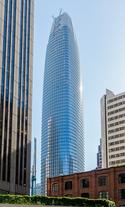“Housing is a human right,” asserts Oregon’s U.S. Representative Earl Blumenauer in a paper titled Locked Out: Reversing Federal Housing Failures and Unlocking Opportunity.” That’s debatable, but if Blumenauer really believes it, then why does he support Oregon’s land-use laws that heavily restrict suburban development? After all, that’s the only kind of housing development that is truly affordable. read more »
Urban Issues
Average Chinese Car Travels as Much as American Car
China is now the largest automobile market in the world. In 2018, 23.7 million new light vehicles were sold in China, compared to the 17.3 million sold in the United States. During the Great Recession, China displaced the US, which had been the world’s leading car market since the invention of the automobile. read more »
- Login to post comments
Property and Democracy in America
To understand how American democracy has worked, and why its future may be limited, it’s critical to look at the issue of property. From early on, the country’s republican institutions have rested on the notion of dispersed ownership of land — a striking departure from the realities of feudal Europe, east Asia or the Middle East. read more »
- Login to post comments
Transit Planners Want to Make Your Life Worse
In our system of government, the public sector is, well, supposed to serve the public. But increasingly the bureaucracies at the state and local level increasingly seek to tell the public how to live, even if the result is to make life worse.
This became glaringly obvious recently, when the CEO of the Los Angeles County Metropolitan Transportation Authority, Phil Washington, reeling from data showing a steady drop of transit riders, decided that the only solution was to make driving worse. read more »
- Login to post comments
If You Improve It, They Will Come
My latest piece is now online at City Journal. It’s a recap of the Indianapolis BRT and Columbus free downtown transit success, as well as a look at Kansas City’s contemplation of free transit citywide. Thanks to a commenter here who originally alerted me to KC’s plans. Here’s an excerpt: read more »
- Login to post comments
Screwy Transit Logic
Bus ridership in Los Angeles is plummeting, says the Wall Street Journal, but LA Metro CEO Phil Washington thinks he has the solution.
“It’s too easy to drive in this city,” says Washington. To get people back on the buses, the city needs to “actually making driving harder.” read more »
- Login to post comments
Cars, Not Trains or Planes Dominate Northeast Corridor Travel
For years, Amtrak has been publicizing its large market share compared with planes in the Northeast Corridor, which covers the major metropolitan air markets of Washington to Baltimore, Philadelphia, New York, Providence and Boston. Amtrak’s Acela fast train provides quick service on the route, and its somewhat slower Northeast Regional trains make stops at locations less convenient to airline travel. Yet its overall share is much lower once all the transportation forms are included. read more »
- Login to post comments
The Community and Economic Development Hierarchy
I've spent many, many years of my career working to improve the economic development prospects of communities. Wanting to make a meaningful, positive contribution to the revitalization of cities is what pushed me into this career path. More to the point, I've spent a good deal of that time working in places that were facing stiff economic headwinds working against them. read more »
- Login to post comments
Around San Francisco’s New South of Market Transit Center
In the 1980s, the city of San Francisco experienced a strong reaction against continued development of its dense financial center skyscraper district north of Market Street. that the term Manhattanization was popularized by the alternative biweekly, San Francisco Bay Guardian, which channeled the interest of many residents to preserve both their neighborhood and the iconic, historic buildings in downtown San Francisco before they were replaced by new, taller structures. read more »
- Login to post comments
Where Salaries Go Furthest in 2019: The Small-City Advantage
Big cities are the engines of the modern economy. They offer workers a range of opportunities — and employers a range of workers, customers, and infrastructure — that smaller places generally can’t match. But when it comes to what many job seekers care about most, smaller cities often are best. In particular, for most jobs, salaries are higher in smaller places after accounting for the cost of living.
read more »
- Login to post comments





















